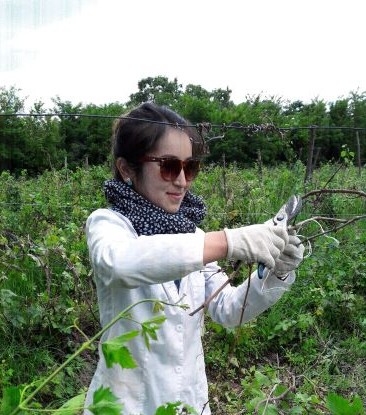
Scientists of the Kazakh Research Institute of Fruit and Vegetable Growing made a number of recommendations on agrothechnical activities at the vineyard.
Authors of the recommendations are Azhitayeva L.A., master of agricultural sciences, junior scientific employee, Anykbekova G.A., master of agricultural sciences, junior scientific employee, Kulzhanov Sh.N., doctoral student at Kazakh Research Institute of Horticulture in Almaty.
During the cultivating grapes, agricultural activities are the most important part of the process, which directly affecting the vital activity of plants, regulating the growth and fruiting of both the grape bush as a whole and its individual parts.
The climatic conditions of Kazakhstan do not allow the cultivation of non-covering grape culture. In all regions where grapes are grown in relatively harsh winters, the air temperature in December-January reaches -25 -270С, and in some years it falls to -30 С and lower. Also in winter, sharp temperature drops are observed (from -25 С to + 5 -10С). All this necessitates sheltering bushes for the winter. In large areas, vineyards are covered with earth. On household plots with plant residues or reed mats.
The opening of the vineyard in the spring begins when the positive average daily air temperature is established and as soon as the agrotechnical condition of the soil allows. However, it should be remembered that the discovery of plants is one of the most crucial moments when growing grapes. In no case should you rush to open the grapes after the first warm days. Some varieties at the first warming begin to "cry", and their buds bloom. Often after warming in March or April, there are frosts that destroy the eyes that open on the vine. Small frosts in May (up to -6 ° C) can damage swollen kidneys. Therefore, a prolonged cold spring is more favorable for plants than a stormy, warm, but with alternating high temperature and night frosts. It is also impossible to delay the opening, since a delay can lead to the aging and death of the buds.
According to long-term average data, the opening of grapes after winter falls on the dates: in the south of the republic in 1-2 decades of March, in the southeast 3 March or early April.
In large areas, with mechanisms in place, the opening is done by plowing the cover shafts as soon as their ridges dry out, and blowing off the remains of the earthen rampart, which should be done 1-2 days after plowing. (The following agricultural machines should be involved in this work - a plow-ripper with an air-blowing unit for opening bushes in the vineyards). Depending on weather conditions and the mechanical composition of the soil, plowing and blowing of the vine bushes is done once or twice and should completely exclude manual opening. In the presence of special mechanisms, plowing and blowing of covered bushes can be carried out simultaneously.
In small areas in peasant farms, the opening of bushes can be done with a grape plow on both sides of a row of furrows, after which each bush is carefully freed from the ground with a chopper manually.
On household plots, vine bushes, if they are covered with earth, are freed from the earth, raking the land to the sides. A hole is formed around the bush, making it easier to clean when pruning. If the bushes were covered with plant debris or mats they simply cleaned. In the spring, both wine and table varieties should be opened before their buds develop.
Mineral fertilizers (nitrogen, phosphorus, potash) are applied in the spring before the bushes open in the furrow slots, annually changing their location in the row-spacings: one year at a distance of 70 cm on each side of the row, the second year 90 cm, the third year in one slot furrow in the middle of the aisles. In the future, the pattern of the location of the furrows is repeated. Phosphoric and potash fertilizers can also be applied into inter-rows.
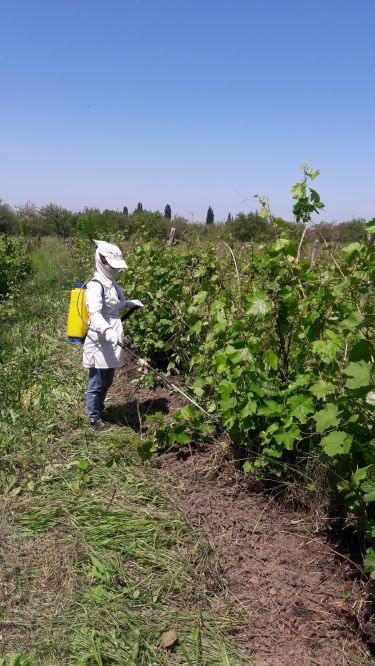
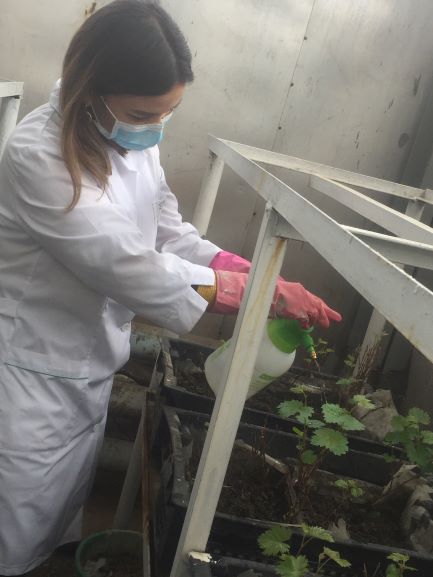
Figure 1 - Processing of grapes
On light and stony soils, in order to avoid losses, nitrogen fertilizers should be applied in two periods: half in the spring along with potash and phosphorus, the rest in the berry growth phase. Summer fertilization should be accompanied by watering.
On the chestnut soils of southeastern Kazakhstan, with an average supply of nutrients, mineral fertilizers are applied based on: nitrogen - 60, phosphorus - 60, potash - 120 kg of active substance per ha. On grey-brownish soil of the south of the republic should be made: nitrogen fertilizers at the rate of 120, phosphorus-90, potash-90 kg of active substance per 1 ha.
Adjust the dose of fertilizers, guided by indicators of the availability of soils and plants with nutrients.
On soils with a low supply of nutrients, the dose of fertilizers is increased by 20-30%, with a very low one - 1.5 times, with a high supply - reduced by 30%.
After opening, it is useful to treat the bushes with a 3-5% solution of copper sulfate or 1-2% nitrophen. This will not only prevent fungal diseases, but also delay the budding of the bud.
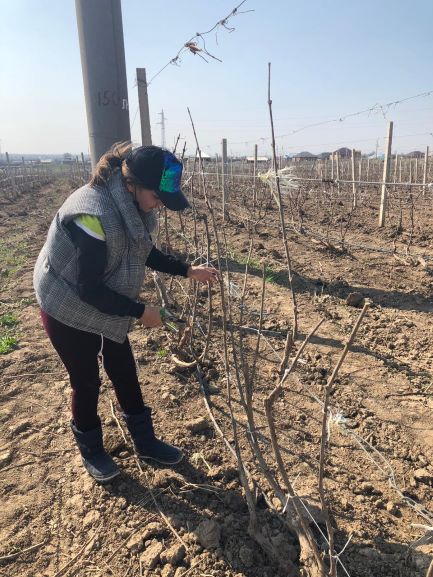
Figure 2 - Spring pruning of grapes
Two days after processing, you can trim the bushes.
Spring pruning of the grape bush is the main agricultural technique aimed at increasing productivity and its quality. When pruning, up to 50% or more of annual growth is removed, and if necessary, removed and replaced with younger perennial parts of the bush (sleeves).
Pruning is closely related to the type of formation of the bushes and the further maintenance of this formation in the fruiting age. In Kazakhstan, a one-sided semi-fan formation is mainly practiced, in which the bushes, depending on the density of planting, should have 3-6 perennial sleeves with fruit links (the fruit link consists of one or two fruiting vines and a knot of substitution).
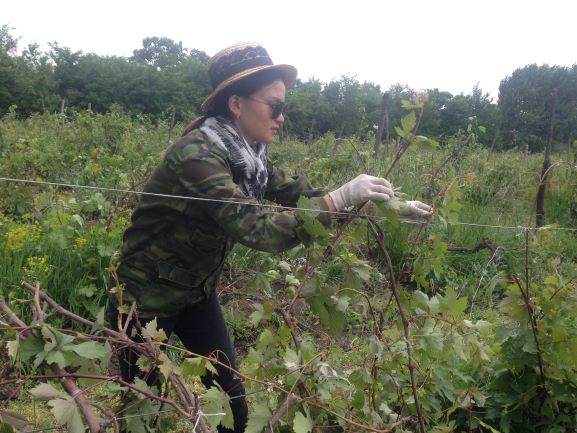
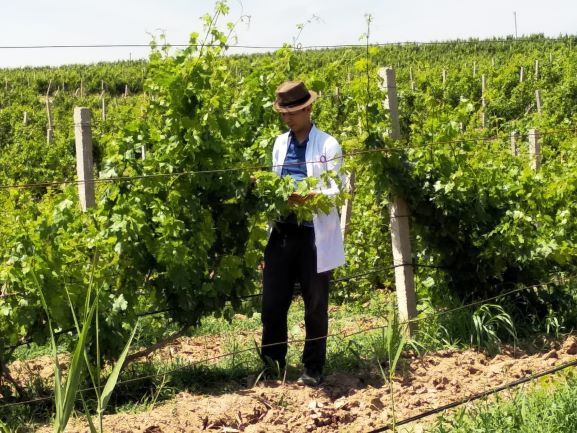
Figure 3 - Green operations in the vineyard
Also in recent years, the “KazRIFVG-1” long-sleeved formation has been introduced, in which the bushes have 2-3 perennial sleeves (110-120cm) with fruit vines cut into 6-12 lug and two or three vines of substitution. This formation with the free development of shoots in the trellis plane is characterized by relatively low capital costs and laboriousness, higher productivity of plantings. In subsequent years, pruning bushes consists in periodically replacing weak, damaged or excessively elongated sleeves with new ones with well-developed vines in the upper part.
One of the conditions for obtaining annually high and high-quality grape harvests is to normalize the load of bushes. Often under the load of bushes they mean the number of eyes left when pruning. However, this indicator can be considered only a relative value of the load, and for any formation it depends on the variety, degree of overwintering and aims to leave the number of growth points necessary on the bush to ensure optimal load of shoots that are left during debris. Given the degree of overwintering of lug, which in the south and southeast of the Republic averages 55-65%, to ensure the development of a sufficient number of shoots, when trimming it is necessary to leave from 100 to 150 lugs per bush.
The final load of bushes, depending on the variety, planting pattern and growing conditions, is -50-90 shoots per bush. Specifically, the load of bushes with different planting schemes is determined on the basis that the maximum density of shoots is 140-150 thousand per 1 ha of vineyard (30-40 shoots per 1 linear meter of row).
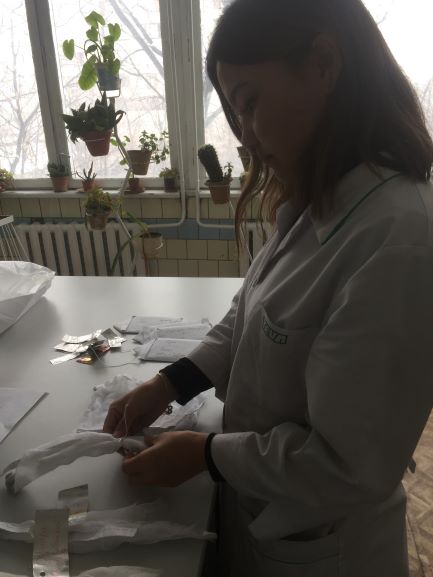
Trellis repair and wire hauling are carried out at the same time as cutting bushes. Dry garter of the vines is carried out after the trellis repair.

